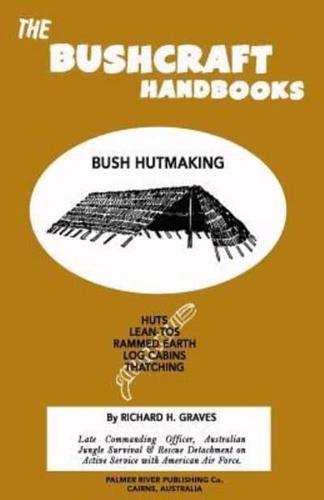Publisher's Synopsis
"The Bushcraft Handbooks" were first published in Australia in 1952. Based on the Author's wartime service in Australia and New Guinea teaching "Junglecraft" to Australian and American forces, they are distilled, concentrated old-time bushcraft knowledge, presented in a very easy to assimilate format. For those who remember them, the Bushcraft Handbooks are also a heavy hit of nostalgia. Rather than publish all of the volumes under the one cover, the Author originally chose to publish each aspect of bushcraft in its own individual handbook. His rationale was that the reader was more inclined to take a 50 page handbook with him into the wilds than a 400 page book. The former can be easily slipped into a pocket or daypack, while the latter cannot. The Bushcraft Handbooks are useless unless the reader practices the skills the books were designed to impart. The individual handbooks format was chosen to support that end. Out of print for decades, and in keeping with the Author's wishes, this series of Bushcraft Handbooks are reproduced as close to their original format as possible. The series comprises the following volumes: Bush Ropemaking, Bush Hutmaking, Traps & Snares, Bush Campcraft, Time & Direction, Travel & Gear, Food & Water in the Bush, Firemaking & Lighting, Trapping & Tracks, Knots & Lashings. From the introduction to "Bush Hutmaking" Little skill is needed to make a comfortable, thatched, weatherproof hut using only materials locally available. Such huts can be expected to have a useful service life of 4 to 6 years without maintenance. With maintenance, such as renewing lashings, and repairs to ridge thatch, the life is anything up to 20 years. Where rammed earth is used for walls, the life of the structure is indeterminate. Many earth wall buildings have stood undamaged for hundreds of years. The building of a thatched hut from local materials is a creative exercise. Design must provide for the anticipated weather conditions. Finding suitable materials almost anywhere presents no problem, but considerable organisation may be required to collect the material. For the actual structure and thatching, good teamwork is required. The final hut, with its promise of long periods of protection and shelter, is the result of combination of head work and hands. With this comes the inward reward of having created a weather-proof hut out of nothing except the natural materials garnered from the surrounding area.








